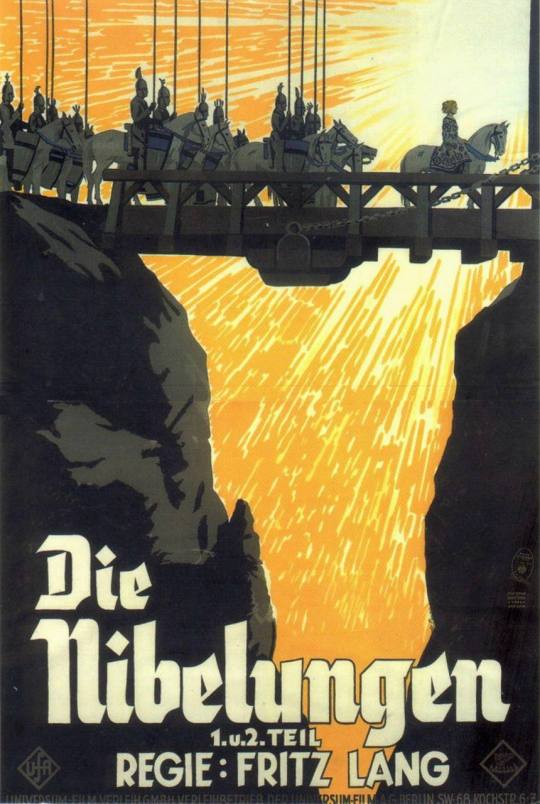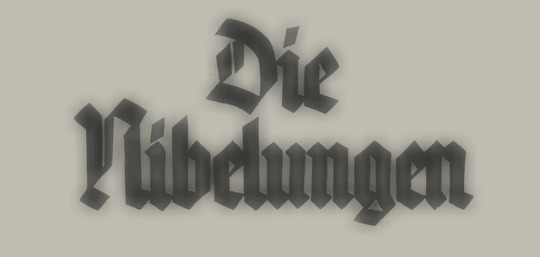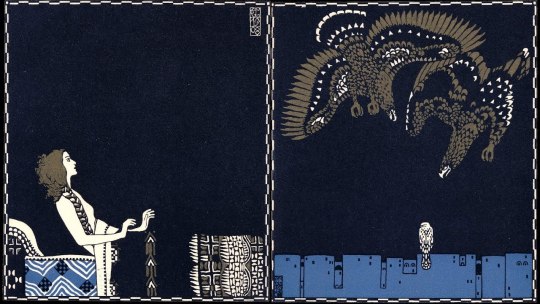#die niebelungen
Note
Hi violettduchess!
How about a ikemen prince headcanon
How would the princes react including the 3 new princes react to MC doing a payback prank on Clavis by putting makeup on his face and dyeing his hair pink in his sleep and the princes weren't aware that MC did it until Clavis found. Hahahahahahahaha!
Thank you! and stay safe!
Here you go! As discussed, here are the 3 new princes! I hope you like it 💜 Writing is under the cut
Silvio Ricci:
A loud scream echoes through the palace halls, interrupting Silvio during his evening routine. A scowl crosses his handsome face as he removes the cucumber slices from his eyes and sits up, annoyance welling up inside him to the point that he crosses the room of his guest suite and flings open the door, ready to use his sharp tongue to cut down whoever has dared disturb him.
What he sees is a cloud of pink hair and clownish makeup storming past his room. He blinks once, twice. Clavis ignores the chance to comment on the prince’s bare chest and sea green silken sleep pants. One Benitoite brow slowly rises as the third prince of Rhodolite disappears around the corner.
He hears another sound, soft and light. Giggling? Setting his jaw, he marches across the embroidered hallway carpet until he gets to the door that is cracked open and your grinning face peeking through the opening.
“That was you?”, he asks, voice level. You look up at him, eyes alight with amusement. “Maybe?”
Silvio considers this a moment, glancing once more down the hall, and then returns his attention to you. His lips curve upward slowly. “Not bad.”
High praise from the Prince of Benitoite. You feel pride tinged with only the slightest blush of embarrassment at what you did. Silvio turns, eager to head back to his room and continue his nightly wellness routine. You’re about to close your door when he pauses, looking back at you over his beautifully sculpted shoulder. “Belle?”
“Yes?”
“Next time, more pink. Clavis is a spring.”
Keith Howell:
There is nothing the Jade Prince loves more than ice cream and in front of him, the white porcelain bowl gleams provocatively, tempting him with the soft, round curves of the three scoops of strawberry. One would think Keith would be thrilled, would be savoring the seconds before he thrusts his silver spoon into that cool, creamy softness, claiming it for his own. But Keith is not happy. See, Keith’s favorite ice cream flavor is butterscotch. And last night, someone had slunk into the palace kitchen and eaten the very last tub of it.
That very same someone had been spotted by Keith at breakfast, sneaking an empty butterscotch ice cream tub onto a servant’s tray. His golden eyes had narrowed, anger spreading through him like an ink blot. Curse you, Clavis Lelouch.
Even the sunshine on the outdoor terrace isn’t enough to cheer him. Listlessly he lifts his spoon. A sudden commotion from inside halts his actions and he turns to see said Rhodolitian prince stalking outside, his hair as pink as bubblegum, his face covered in the same sort of makeup small children assume when trying to imitate grown ups. He doesn’t even see Keith as he storms past.
The pink-haired prince disappears down the path. A few moments later, you waltz outside, meeting Keith’s questioning expression with a grin.
“Butterscotch is also my favorite flavor.” You throw him a wink and he returns with a smile, canary-bright.
Strawberry ice cream has never tasted so good.
Gilbert von Obsidian:
You sit with the Prince of Obsidian in the rose garden, a copy of Die Niebelungen open in your lap. You are painstakingly reading the language of Obsidian, trying to wrap your mouth around the shapes of its words, the feel of them on your tongue, in the back of your throat. Gilbert is helping, interrupting to sound out vowel sounds that do not exist in your native language and words as long as the page itself that shouldn’t be real but are.
You’re attempting to force your tongue to say the word Eichhörnchen when you suddenly hear your name thundering from the garden entrance. Gilbert is startled, glancing up from the pages of the saga, but you remain calm, as still as the palace pond on a windless day.
Clavis comes tearing down the garden path, his hair as bright as the pink peonies he passes. His eyelids the soft blue of hydrangeas. His cheeks tinted the beautiful peach-pink of begonias. And those lips. They are the deep red of the appropriately named Checkmate rose. Gilbert is rendered speechless when Clavis stops in front of the bench, angrier than a wet cat.
“I TAKE IT BACK!”
You smile sweetly, sugar and sunshine. “That’s all I wanted. Thank you Clavis.” He turns on his heel and stomps back toward the palace. Gilbert watches him a long moment, then turns his attention back to you.
“When you said you had something to do at our usual meeting hour….?” “Mmm hmm,” you confirm as you smooth out the page of the book. The prince of Obsidian is unable to stop the slow smile crossing his lips. “May I ask what he did to deserve such a cruel and unusual punishment?”
You shrug a shoulder. “He may have said something about the Obsidian language always sounding angry, harsh and like someone needing to cough up phlegm." Gilbert's smile turns gleefully sharp. "Verdient", he murmurs. You glow under that gaze of his. "Yes, he certainly did earn that. Now where were we?"
*
Tagging: @aquagirl1978 @atelier-maroron @alixennial @alexxavicry @queengiuliettafirstlady @rhodolitesroseforclavis @somekidnamedkai @ikemen-prince-writers-posts @bellerose-arcana @queen-dahlia @moonstruck-writing
#ikemen series#ikemen prince#ikepri#ikemen headcanons#ikemen silvio#ikepri silvio#silvio ricci#ikemen keith#ikepri keith#keith howell#ikemen gilbert#ikepri gilbert#gilbert von obsidian#ikemen clavis#ikepri clavis#clavis lelouch#violettwrites
155 notes
·
View notes
Note
Woah, so maybe you've already talked about this so in that case, you can redirect me to that post, but what are some of the most common misconceptions you've heard? Or, preconceived ideas that you find stupid?
Okay, so this comes like four days late but I had to sit down and think about it, lol!
Misconceptions about the Viking age in a non-academic answer:
(Putting it under a read more because it dragged out)
Clothing:
Their clothing was much like that pictured in Vikings the TV show. False.
Textiles found in graves like Mammen look like this when they've been reconstructed after detailed analysis of dye pigments, thread counts and what kind of fabric/fur was used:

Notice the colors and the details. These reconstructions are on display at the Nationalmuseum of Denmark, and pieces of the original textiles are also on display there.

Notice the clothes in this picture here as well. There is a noticeable lack of "dark" leather and grim colors and IKEA-fake furs thrown onto the shoulders of the men Game of Thrones style.
We have a lot of accurate finds for textiles and reenactors have their picks to choose from. What Vikings did was basically what Wagner did with his Die Niebelungen and went "what do I think the Vikings looked like and I will disregard all the archaeological evidence". Worst part is that The History Channel is the producer behind Vikings which makes it look like it's historically accurate.
It is not.
Timeline
People usually say the Viking age started with Lindisfarne in 793, but the Vikinge age started earlier - sometime during the Migration Period (years 200-800).
The ships that attacked the monastery at Lindisfarne didn't pop up out of the blue - drakkars and viking pillaging must have existed before 793. Lindisfarne is just the first written source we have of a viking raid in England.
Let's look at the Fimbul Winter in Norse Mythology: we now know that it relates to the volcanic winter of 536. Many gold artefacts were sacrificed to bogs and the gods around that period, possibly as an offering to the gods to end the winter. A good example of these items are the Golden Horns of Gallehus ("Guldhornene"):

They are usually associated with the Viking age but are dated to the early 5th century - aka BEFORE where the current books set the Viking age to start.
What Vikings also does is establish that all the discovering Ragnar and his sons do, the Vikings did within the span of 2 generations - the Viking age lasted from somewhere around the years 500 to somewhere around the year 1200, even though Wikipedia will tell you exactly 793-1066.
They didn't exactly disappear out of the blue.
And their "discoveries" during their expansions didn't all happen within 30 years.
Runes
Only Vikings used Old and New Futhark runes, correct?
Wrong!
Elder Futhark runes were used already in the 2nd century and all the way up into the 8th, where as Younger Futhark runes were used from the 9th until the 11th. In between all of that are Anglo-Saxon runes, Medieval runes (used up until the 15th century!)
And, surprisingly, runes were not only used for "weird religious shit" but also for the state of the art "Tormund likes boys" and "this belongs to Cnut" things.
There is a difference between the use of Runes and the languages used - Old Norse, Norrønt, Primitive Norse - but that's a longer discussion which a tumblr post couldn't do justice.
There are only the Elder Edda and Prose Edda as sources about Norse myths and legends
False.
The eddas are only two of the written sources we have on the Viking age.
The Poetic Edda contained in the Codex Regius manuscript, dated from the 13th century.
The Prose Edda (written by Snorri Sturluson) is also dated to approx 1220.
Knowing we established further up that the Viking age "ended" in 1066, these two sources are biased with their contemporary views on the stories they've written down. It's the equivalent of someone in 2022 writing down stories from another culture from anywhere between 1500 and 1800 - there's bound to be modern and cultural bias take into account with it.
We have the Gesta Danorum (from 12th century Saxo Grammaticus), runestones (sprinkled from the 4th til the 12th century), the Konungasögur, the Íslendingasögur, the samtímasögur, but we also have the lost texts like the Skjolungesaga (Scylding Saga), etc.
Beowulf could also be interpreted as a source on things Norse.
You can browse the Heimskringla webpage for sources on Old Norse source materials here.
"Modern day vikings"
Wardruna, Danheim and Heilung, etc. are not making "authentic" Viking age music. We have found music instruments of different kinds, but nothing actually played 1000+ years ago has survived this far - we have the words to the Voluspa and the other texts that are poems, and we have instruments.
Do with that as you will!
Nordic animism, neo-pagans and modern day Asatrú are not what the Viking age contemporaries did - we can't know for sure because we don't have sources we can trust about it this far.
We have reenactors who do their best to be as historically accurate as possible, but the problem with that is that what we know of the Viking age (and how far they went into the world and how long they existed) all depends on archaeological finds - and historical finds.
Until very recently, the location of Lejre in Denmark as a seat of power, for example, was thought to be a myth.
And then in 2009 and 2010 they found several early Viking age longhouses in Lejre during an excavation.
Who's to imagine what they find if they keep digging in the area?
It's also why so many new things are showing up from the dirt on Falster in Denmark, where they're building the Femern connection to Germany - archaeologists are working hard to make sure nothing gets lost with modern building.
It changes almost daily.
But we will never know nor be what "ancient" vikings were, because 793 and 2022 are simply two very different worlds to live in.
So, if you want to do a blót ritual and get married under the Ásatrú faith, awesome! But remember it's a modern take on what little we have from the historic ages we take inspiration from.
Tattoos and hair
Don't get me started on those.
We have no archaeological evidence of tattoos in the viking age and hairstyles are dubious at best. The best witnesses we have for hairstyles are bog bodies, and there aren't a lot of those from the Viking age due to the way the Vikings paid their respects to the dead.
Modern "viking" hairstyles are just that. Modern interpretations of what once was.
10 notes
·
View notes
Text

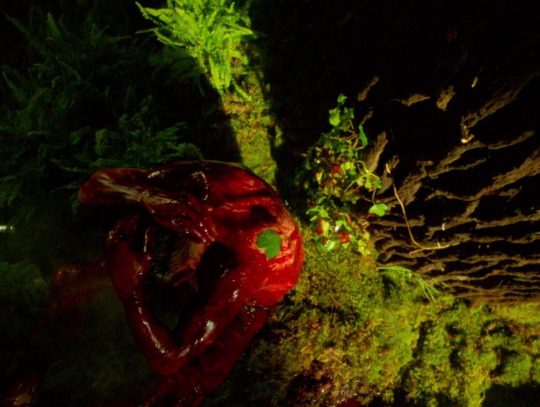
die niebelungen (1924) // babylon berlin s4e01
6 notes
·
View notes
Text
🌸 Die Geschichte Oberons 🌸
So richtig bekannt wurde Oberon durch die germanischen Sagen und Mythen. Er ist ein Zwerg namens Alberich, welcher als König der Elfen und Zwerge bezeichnet wird. Im "Ring der Niebelungen", geschrieben von Richard Wagner (deutscher Schriftsteller), bekommt er dann eine größere Rolle. Dort ist er ein tyranischer König der Schwarzalben (Zwerge, Gegenspieler von Lichtalben:Elfen) und entsagte für einen Schatz der Liebe. Als ihn dieser Schatz abgerungen wurde, dazu zählten auch ein Helm und ein Ring, verfluchte er den Ring, sodass der der ihm besitzt den Tod findet. Er wird als räuberich dargestellt und scheint gerne Frauen zu entführen. Die entstandenen Kinder beansprucht er für sich. Eine ähnliche Gesichte erzählt vom Zwerg Andwari, welcher als Lachs im WAsser lebte und einen schatz hütete.
Eine Wandlung vollzog er als Auberon in "Les Prouesses et faitz du noble Huon de Bordeaux" (Französicher heroischer Song) einem französichen Gedicht, in dem er der König der Elfen/Feen war. Seine Größe war immer noch einen Zwerges, doch vom Aussehen her war er wunderschön. Und das nur, weil er von einer Elfe/Fee verflucht wurde. Der Progatonist der Geschichte tötete in Selbstverteidigung den Sohn eines Kaisers und benötigt Oberons Hilfe, um bestimmte Taten vollbringen zu können, um dafür nicht getötet zu werden. Zuvor wurde er von einem Einsidler gewarnt, dass er liieber nicht mit Oberon sprechen sollte. Hier wird auch angeteast, dass Oberon magische Kräfte hat.
Dieses Gedicht griff der englische Dichter William Shakespear auf und schrieb "Mein Sommernachtstraum". Aus diesen Schriftstück resultierten "My Fairy Queen", welches die Handlung von Titania noch einmal aufgriff und "Walpurgisnachtstraum" bzw. "Oberons und Titanias goldene Hochzeit". Letzters knöpft an die Handlung von "Mein Sommernachtstraum" an und diente nur dem Zweck, die grieschichen Götter zu verteufeln. Die Hochzeit wird mit jede menger Hexen gefeiert und es wird gesagt, dass Oberon genauso teuflich wie die grieschichen Götter sei.
In der Handlung von "Mein Sommernachtstraum" geht es hauptsächlich um eine Hochzeit, zu der Gäste kommen sollen. Einmal die vier Personen, deren Liebe im Vordergrund der Geschichte steht und einmal Oberon und Titania. In diesem Stück ist Oberon der König der Elfen/Feen und normal groß. Bilder von Oberon und Titania zeigen, dass diese menschliche Größe haben zumal die beide Liebesaffäiren mit dem menschlichen Hochzeitspaar hatten, welche nur Oberon zugibt. Beide hatten einen Streit, da Oberon den Ziehsohn von Titania für sich beansprucht. Hier wird auch angemerkt, dass beide mächtige Naturgeister sind, die das Wetter beeinflussen können. Aus rache schickt er seinen Hofnarren Puck los, der Titania einen Liebestrank einflößen soll, sodass sie sich in das Erstbeste verliebt was in ihr Blickfeld gerät. In Pberon sollte es am besten ein Tier oder ein scheußliches Wesen sein. In dem Fall war es der Weber Bottom, welcher Dank Puck einen Eselskopf hatte. Auf dem Weg trafen sie zwei der vier Hauptfiguren. Oberon beschloss der Frau, welche abgewiesen wurde, zu helfen und dem Mann auch etwas vom dem Trunk zu verabreichen. titania schlief die ANcht über mit Bottom, was Oberon die Gelegenheit verschaffte das Kind von ihr zu stehlen. Am nächsten Tag tat ihm das Ganze allerdings Leid, wesegen der Eselskopf wieder entfernt wurde, sodass der Beischlaf Titania nicht peinlich sein musste. Außerdem wurde sie von dem Liebeszauber befreit. Anschließend vertrugen sich die Beiden wieder.
Also was ist Oberon nun? Zwerg, Elfe, Fee? Sein ursprünglicher Name Alberich setzt sich aus „Elb" bzw. „Naturgeist" (Alb) und „Herrscher, Fürst, König" (-rich bzw. -rik) zusammen. Und Elfen nennt man auch auch Alben oder Elben. Sie können klein mit Flügeln sein oder auch groß wie Mehschen. In den alten germanischen Mytholigie hatten Zwerge und Elfen viele Gemeinsamkeiten. In dem Fall könnte man Zwerge und Elfen gleichsetzen. Im Englischen heißt es allerdings "Fee" und nicht "Elf". Im Grunde sind Feen und Elfen das Gleiche. Das Wort "Elf" stammt aus dem germanischen und das Wort "Fee" aus dem Latainischen. In dem Fall ist es pupsegal, ob Oberon nun jetzt eine Elfe oder Fee ist.
0 notes
Text


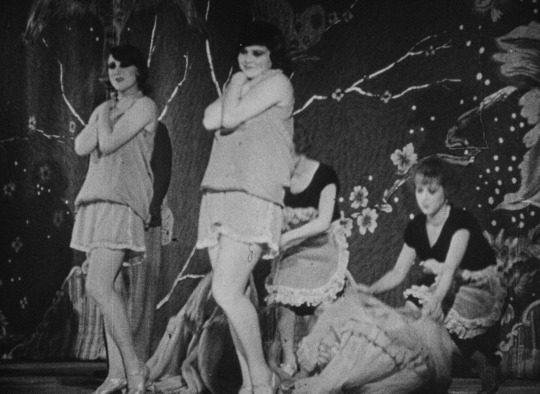



Berlin: Symphony of a City (1928) was filmed over 18 months and gives the impression it all took place in one day from morning to night. It was directed by Walter Ruttmann. Walt was born in Frankfurt, Germany, and had 34 director credits from a 1921 short to a 1940 short. None of his other directorial efforts gained any international recognition, although he was the cinematography on Fritz Lang's masterpiece Metropolis (1927). His only other cinematography credit was Lang's Die Niebelungen: Siegfried (1924). He also had nine editor credits and 10 writer credits.
1 note
·
View note
Text
Favorite films discovered in 2020

Well, this year sucked. I did see some good movies though. Some even made after I was born!
Perfect Blue (dir. Satoshi Kon, 1997)

I watch a lot of thrillers and horror movies, but precious few actually unsettle me in any lasting way. This cannot be said of Perfect Blue, which gave me one of the most visceral cinematic experiences of my life. Beyond the brief flashes of bloodletting (you will never look at a screwdriver the same way again), the scariest thing about Perfect Blue might be how the protagonist has both her life and her sense of self threatened by the villains. The movie’s prescience regarding public persona is also incredibly eerie, especially in our age of social media. While anime is seen as a very niche interest (albeit one that has become more mainstream in recent years), I would highly recommend this movie to thriller fans, whether they typically watch anime or not. It’s right up there with the best of Hitchcock or De Palma.
The Good, the Bad, and the Ugly (dir. Sergio Leone, 1966)

Nothing is better than when an iconic movie lives up to the hype. Clint Eastwood, Eli Wallach, and Lee Van Cleef play off of one another perfectly. I was impressed by Wallach as Tuco in particular: his character initially seems like a one-dimensional greedy criminal, but the performance is packed with wonderful moments of humanity. Do I really need to say anything about the direction? Or about the wonderful storyline, which takes on an almost mythic feel in its grandeur? Or that soundtrack?
Die Niebelungen (both movies) (dir. Fritz Lang, 1924)

I did NOT expect to love these movies as much as I did. That they would be dazzlingly gorgeous I never doubted: the medieval world of the story is brought to vivid life through the geometrical mise en scene and detailed costuming. However, the plot itself is so, so riveting, never losing steam over the course of the four hours it takes to watch both movies. The first half is heroic fantasy; the second half involves a revenge plot of almost Shakespearean proportions. This might actually be my favorite silent Fritz Lang movie now.
Muppet Treasure Island (dir. Brian Henson, 1996)
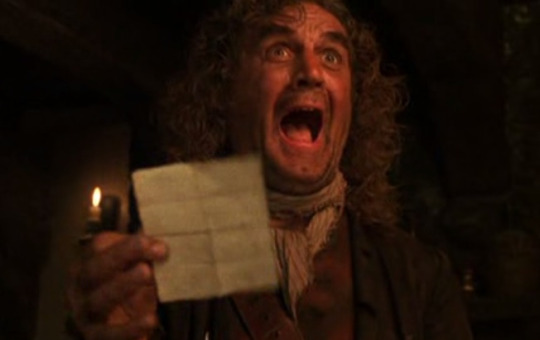
I understand that people have different tastes and all, but how does this movie have such a mixed reception? It’s absolutely hilarious. How could anybody get through the scene with “THA BLACK SPOT AGGHHHHHHH” and not declare this a masterpiece of comedy? And I risk being excommunicated from the Muppet fandom for saying it, but I like this one more than The Great Muppet Caper. It’s probably now my second favorite Muppet movie.
Belle de Jour (dir. Luis Bunuel, 1967)

I confess I’m not terribly fond of “but was it real???” movies. They tend to feel gimmicky more often than not. Belle de Jour is an exception. This is about more than a repressed housewife getting her kicks working as a daytime prostitute. The film delves into victim blaming, trauma, class, and identity-- sure, this sounds academic and dry when I put it that way, but what I’m trying to say is that these are very complicated characters and the blurring of fantasy and reality becomes thought-provoking rather than trite due to that complexity.
Secondhand Lions (dir. Tim McCanlies, 2003)
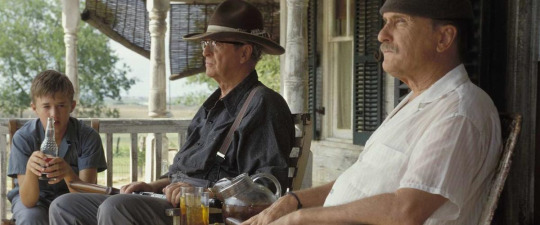
The term “family movie” is often used as a synonym for “children’s movie.” However, there is an important distinction: children’s movies only appeal to kids, while family movies retain their appeal as one grows up. Secondhand Lions is perhaps a perfect family movie, with a great deal more nuance than one might expect regarding the need for storytelling and its purpose in creating meaning for one’s life. It’s also amazingly cast: Haley Joel Osment is excellent as the juvenile lead, and Michael Caine and Robert Duvall steal the show as Osment’s eccentric uncles.
The Pawnbroker (dir. Sidney Lumet, 1964)

Controversial in its day for depicting frontal nudity, The Pawnbroker shocks today for different reasons. As the top review of the film on IMDB says, we’re used to victims of great atrocities being presented as sympathetic, good people in fiction. Here, Rod Steiger’s Sol Nazerman subverts such a trope: his suffering at the hands of the Nazis has made him a hard, closed-off person, dismissive of his second wife (herself also a survivor of the Holocaust), cold to his friendly assistant, and bitter towards himself. The movie follows Nazerman’s postwar life, vividly presenting his inner pain in a way that is almost too much to bear. Gotta say, Steiger gives one of the best performances I have ever seen in a movie here: he’s so three-dimensional and complex. The emotions on his face are registered with Falconetti-level brilliance.
The Apartment (dir. Billy Wilder, 1960)
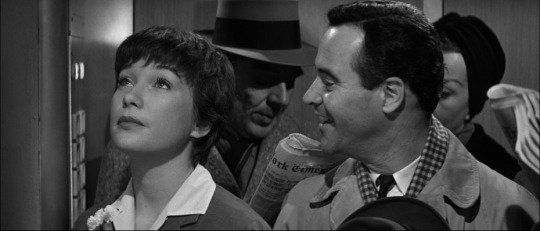
While not the most depressing Christmas movie ever, The Apartment certainly puts a good injection of cynicism into the season. I have rarely seen a movie so adept at blending comedy, romance, and satire without feeling tone-deaf. There are a lot of things to praise about The Apartment, but I want to give a special shoutout to the dialogue. “Witty” dialogue that sounds natural is hard to come by-- so often, it just feels smart-assy and strained. Not here.
Anatomy of a Murder (dir. Otto Preminger, 1959)
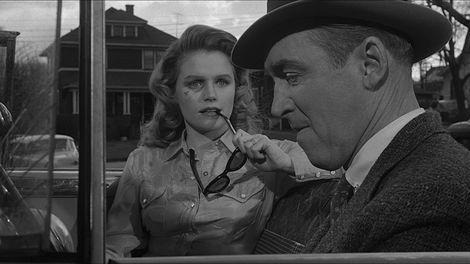
I’m not big into courtroom dramas, but Anatomy of a Murder is a big exception. Its morally ambiguous characters elevate it from being a mere “whodunit” (or I guess in the case of this movie, “whydunit”), because if there’s something you’re not going to get with this movie, it’s a clear answer as to what happened on the night of the crime. Jimmy Stewart gives one of his least characteristic performances as the cynical lawyer, and is absolutely brilliant.
Oldboy (dir. Park Chan-Wook, 2003)

Oldboy reminded me a great deal of John Webster’s 17th century tragedy The Duchess of Malfi. Both are gruesome, frightening, and heartbreaking works of art, straddling the line between sensationalism and intelligence, proving the two are not mutually exclusive. It’s both entertaining and difficult to watch. The thought of revisiting it terrifies me but I feel there is so much more to appreciate about the sheer craft on display.
Family Plot (dir. Alfred Hitchcock, 1976)
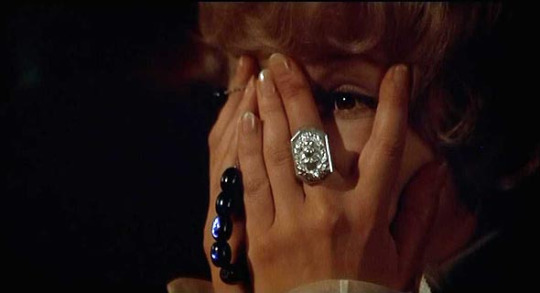
Family Plot is an enjoyable comedy; you guys are just mean. I know in an ideal world, Hitchcock’s swan song would be a great thriller masterpiece in the vein of Vertigo or Psycho. Family Plot is instead a silly send-up of Hitchcock’s favorite tropes, lampooning everything from the dangerous blonde archetype (with not one but two characters) to complicated MacGuffin plots. You’ll probably demand my film buff card be revoked for my opinion, but to hell with it-- this is my favorite of Hitchcock’s post-Psycho movies.
My Best Girl (dir. Sam Taylor, 1927)
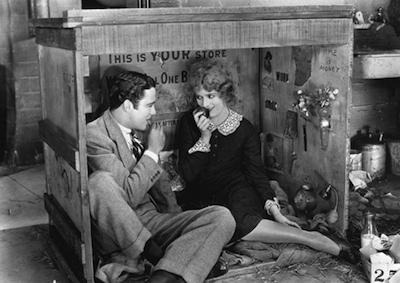
Mary Pickford’s farewell to silent film also happens to be among her best movies. It’s a simple, charming romantic comedy starring her future husband, Charles “Buddy” Rogers. Pickford also gets to play an adult character here, rather than the little girl parts her public demanded she essay even well into her thirties. She and Rogers are sweet together without being diabetes-inducing, and the comedy is often laugh out loud funny. It even mocks a few tropes that anyone who watches enough old movies will recognize and probably dislike-- such as “break his heart to save him!!” (my personal most loathed 1920s/1930s trope).
Parasite (dir. Bong Joon-ho, 2019)

This feels like such a zeitgeist movie. It’s about the gap between the rich and the poor, it’s ironic, it’s depressing, it’s unpredictable as hell. I don’t like terms like “modern classic,” because by its very definition, a classic can only be deemed as such after a long passage of time, but I have a good feeling Parasite will be considered one of the definitive films of the 2010s in the years to come.
Indiscreet (dir. Stanley Donen, 1958)

Indiscreet often gets criticized for not being Notorious more or less, which is a shame. It’s not SUPPOSED to be-- it’s cinematic souffle and both Ingrid Bergman and Cary Grant elevate that light material with their perfect chemistry and comedic timing. It’s also refreshing to see a rom-com with characters over 40 as the leads-- and the movie does not try to make them seem younger or less mature, making the zany moments all the more hilarious. It’s worth seeing for Cary Grant’s jig (picture above) alone.
The Taking of Pelham One Two Three (dir. Joseph Sargent, 1974)

This movie embodies so much of what I love about 70s cinema: it’s gritty, irreverent, and hard-hitting. It’s both hilarious and suspenseful-- I was tense all throughout the run time. I heard there was a remake and it just seems... so, so pointless when you already have this gem perfect as it is.
They All Laughed (dir. Peter Bogdonavich, 1981)
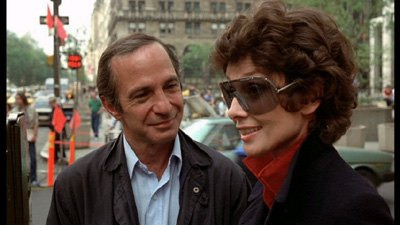
Bogdonavich’s lesser known homage to 1930s screwball comedy is also a weirdly autumnal movie. Among the last gasps of the New Hollywood movement, it is also marks the final time Audrey Hepburn would star in a theatrical release. The gentle comedy, excellent ensemble cast (John Ritter is the standout), and the mature but short-lived romance between Hepburn and Ben Gazarra’s characters make this a memorably bittersweet gem.
The Palm Beach Story (dir. Preston Sturges, 1942)

Absolutely hilarious. I was watching this with my parents in the room. My mom tends to like old movies while my dad doesn’t, but both of them were laughing aloud at this one. Not much else to say about it, other than I love Joel McCrea the more movies I see him in-- though it’s weird seeing him in comedies since I’m so used to him as a back-breaking man on the edge in The Most Dangerous Game!
Nothing Sacred (dir. William Wellman, 1937)

I tend to associate William Wellman with the pre-code era, so I’ve tried delving more into his post-code work. Nothing Sacred is easily my favorite of those films thus far, mainly for Carole Lombard but also because the story still feels pretty fresh due to the jabs it takes at celebrity worship and moral hypocrisy. For a satire, it’s still very warm towards its characters, even when they’re misbehaving or deluding themselves, so it’s oddly a feel-good film too.
Applause (dir. Rouben Mamoulian, 1929)

I love watching early sound movies, but my inner history nerd tends to enjoy them more than the part of me that, well, craves good, well-made movies. Most early sound films are pure awkward, but there’s always an exception and Applause is one of them. While the plot’s backstage melodrama is nothing special, the way the story is told is super sophisticated and expressive for this period of cinema history, and Helen Morgan makes the figure of the discarded burlesque queen seem truly human and tragic rather than merely sentimental.
Topaz (dir. Alfred Hitchcock, 1969)
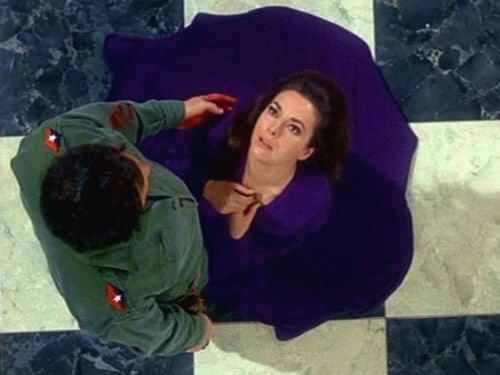
Another late Hitchcock everyone but me seems to hate. After suffering through Torn Curtain, I expected Hitchcock’s other cold war thriller was going to be dull as dishwater, but instead I found an understated espionage movie standing in stark contrast to the more popular spy movies of the period. It’ll never be top Hitchcock, of course-- still it was stylish and enjoyable, with some truly haunting moments. I think it deserves more appreciation than it’s been given.
What were your favorite cinematic discoveries in 2020?
#thoughts#belle de jour#topaz#family plot#the taking of pelham 123#the pawnbroker#nothing sacred#my best girl#applause#muppet treasure island#perfect blue#die niebelungen#parasite#the good the bad and the ugly#the palm beach story#they all laughed#indiscreet#oldboy#anatomy of a murder#the apartment#secondhand lions
155 notes
·
View notes
Photo
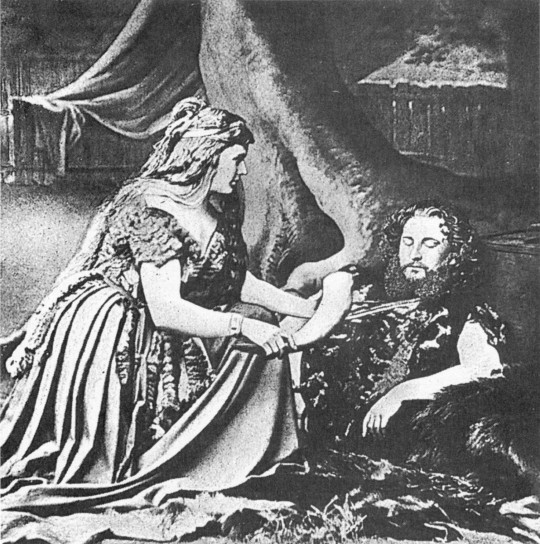
Act 1 at the Bayreuth premiere, August 1876: Sieglinde and Siegmund
via
25 notes
·
View notes
Text
Wenn dann denn Es sei es Boing bum Chuck Norris Avus Nürburgring Ringlein Ringlein Wanderlust Niebelungen Mordor Nathan' Weise Reise Reise Seemann leise Wenn ein Herz auf Urlaub geht Ist es für die Lieb' schon lang zu spät. Aufgabe Gelöst Kapituliert Vertrauen verliert Bobby, Braun ist jeder Abschaum Das Stinktier bei Bambi heißt Blume Pupsi Blumenduft Schuft verpufft piff paff Wenn dann denn Hätte könnte würde Hätte hätte kettensägenmassager Kettensprenger gummitwist Liebesbote Pazifist Es sei es Boing Bum Chip und Chap Donald Dada Zippverschluss Tippverschliss Zucki Rucki unter Strom ACDC pol an pol Ringlein Ringlein du musst wandern Du musst radeln Du musst schieben Luft ist raus Wozu verlieben (C) Edition blickdichtung
4 notes
·
View notes
Text
Post #12
1. It seems that Ludwig II might have been gay but might not have come to terms with it. Based on what the book says, I don’t think we can say for certain either way. He was attracted to men, at least with Josef Kainz, and, in his letter to his friend Cosima, he indicated his terror at the thought of being married to Princess Sophie. He writes that he has always loved her as a relative but not enough to marry and that he would die if he did. After his engagement ended, Ludwig II took interest in a number of women, including Czarina Maria, Lila von Bulyorszky and Marie Dahn-Hausmann, but these were mostly older women who he seemed to admire. He never married.
2. Wagner wanted to befriend Ludwig II because he was in dire financial straits and he wanted to secure the new king as a patron.
3. Ludwig first found out about Wagner when he was 12 and came across some of Wagner’s treatises in his great uncle’s library. Ludwig first knew of Wagner from these treatises because his father wouldn’t allow him to see Wagner’s operas.
4. The first of Wagner’s operas that Ludwig II finally saw was Lohengrin.
5. Ludwig’s cabinet pressured him to order Wagner to leave Munich because they disapproved of the influence Wagner had on the king. He went to a villa on Lake Lucerne in Switzerland with his costs covered by Ludwig.
6. Ludwig’s financial support of Wagner also meant that he was in a position to interfere creatively and have input or insist on certain details that Wagner would disagree with. Ludwig also owned the rights to some of Wagner’s operas and called for the premiere of the Rheingold as a standalone performance before the complete set of Der Ring des Niebelungens was finished and premiered in its entirety the way Wagner intended.
7. I think a composer having a personal opera house is a little ridiculous. If Wagner could have funded it himself, then that’s his money and his decision but for it to be partially state-funded seems inappropriate unless another opera house is needed and will be used by other composers. I don’t think the Festspielhaus is used for performances of other composers’ work. Maybe, if in hindsight, it’s decided that one composer’s work is significant enough to deserve its own performance hall then that can be funded as public and state support for the arts but for that to happen in real time and be carried out by a king seems like favoritism and personal interest rather than public.
8. Ludwig’s letters were very cryptic since they would contain hundreds of literary quotations that would be difficult to interpret cohesively or distinguish from the king’s own words. I don’t think this changes my take on the first question but it only emphasizes that it is difficult to know for certain.
9. “Neo” means “new.” I find Linderhof to be the most interesting since it was the only castle that Ludwig had built whose completion he lived to see and where he actually spent considerable time. We even know his daily routine there.
10. Ludwig II died under mysterious circumstances when his body and the body of his psychiatrist were found in Lake Starnburg outside of Berg Castle after they had left for a walk together. It seems likely that Ludwig attempted suicide by jumping in the lake and his doctor jumped in to try to save him but couldn’t since he was much smaller than the king.
1. Opera is a form of dramatic musical theater from Europe in which all dialogue is sung in a distinct virtuosic style.
2. I can barely understand operas sung in English and I would be more interested in the production and the music anyways so I don’t think the works should be translated and I think the superscripts just distract from the rest of the production. Also, most people going to operas are already fans of opera and probably know the story anyways. If not, they can read about it ahead of time if they want. I think this is a shortcoming of the medium and there isn’t a perfect solution. I.E. How do you take a 250 year old musical drama sung in another language and set in that context and make it accessible to everyone today while maintaining its integrity? I don’t think you can.
0 notes
Text
Nina und meine Wahrnehmung
Nun, was soll ich sagen
Schon eine kleine Weile lang plagen
Mich Gedanken und Bilder von dir
Unbewusst wie das Atmen, inhalier
Ich Gefühle für dich
Und an sich stört mich das nich
Aber jedes Mal bevor wir uns sehen
Gibt mein Kopf mir zu verstehen
Wie verrückt du mich machst
Denn jedes Mal wenn du lachst
Brennt in mir eine Lavalampe
Mein Herz geht so lang ab, wie auf ner Rampe
Bis ich alles Klare verschlampe
So bin ich wie hypnotisiert
Allerdings sprachlich noch versiert
Doch was nützt mir das Können
Wenn es mir die Göttinnen nicht gönnen
Einen klaren Ton zu verlieren
Mich erschlagen, mit dem Moll von Klavieren
Außen still und reserviert
Innerlich schon längst blamiert
Irgendwie reiß ich mich noch zusammen
Doch es ist eine schwere Geburt, ohne Hebammen
Eine Frage, die in mir brannte
Was wäre, wenn ich dich nicht kannte?
Die Reisen durch meine Erinnerungen
Die manchmal wirken wie Niebelungen
Zeigen an mir nur eine Schwäche
Und zwar, dass ich an dir zerbreche
Wessen Schuld ist das denn jetzt?
Frage ich mich leicht gehetzt
Zu lang möchte ich an dem Ort nicht sein
Denn hier bin ich allein
Meine Zeit ist das Präsens
Wegen des Fehlens
Der Dämonen, aus der Vergangenheit
Denn sie verlangen Neid
Auf die guten alten Zeiten
Aber ich lasse mich nicht dazu verleiten
Dass sie mich ständig begleiten
Also bleibt die Schuldfrage offen
Bis ich das nächste Mal besoffen
Bin, und mit angeblichem Scharfsinn
Natürlich alle Antworten kenn
Und mich nich in Konjunktive verrenn
Wenn ich nun ein Fazit ziehen müsste
Dann wünschte ich, ich küsste
Deine Lippen jeden Morgen und jeden Abend
Aber insbesondere bevor wir schlafend
In Frieden, nebeneinander liegen
Wünschte ich diese Momente blieben
Für die Ewigkeit
Doch bin ich ehrlich, ist das was bleibt
Geprägt von Einsamkeit
Sollte ich nun die Flucht ergreifen?
Und warten bis wir reifen?
Oder soll ich bei einem Versehen
Dir fast alles gestehen?
Offensichtlich weiß ich nicht weiter
Dennoch versuche ich heiter
Durch das Leben zu gehen
Und irgendwann zu verstehen
Wohin mein Kompass mich treibt
Zwischendurch sitz ich hier und schreib
Texte über deine Einflusssphäre
Oder über irgendeine Affäre
0 notes
Photo
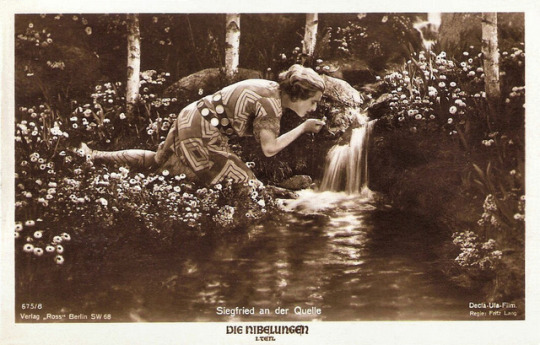









Die Niebelungen (1924) was directed by Fritz Lang. Fritz has eight entries on the 2019 edition of the TSPDT list of the 1,000 Greatest Films. and two entries on the New York Times list of the 1000 Best Films - M and The Big Heat. His two entries among my best 1,001 movies are Metropolis and M.
13 notes
·
View notes
Photo

Die Niebelungen - Fritz Lang
https://kinoimages.wordpress.com/tag/fritz-lang/
19 notes
·
View notes

